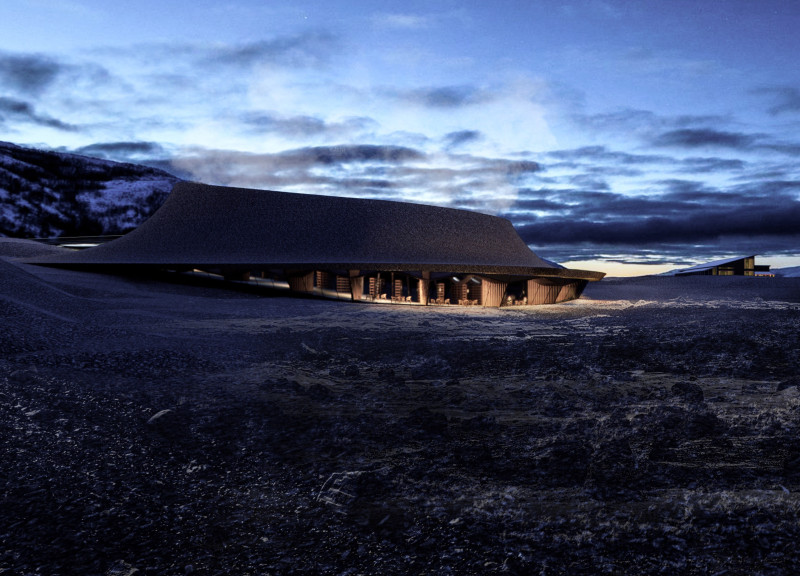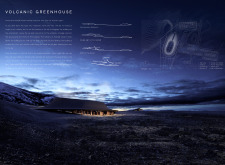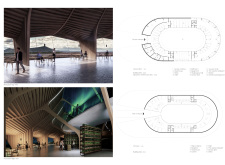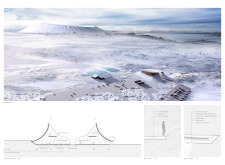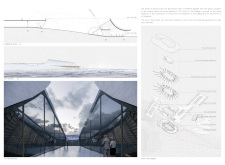5 key facts about this project
This architectural project represents a thoughtful response to the natural contours and volcanic features of the area, particularly the imposing presence of Hverfjall volcano. The design philosophy is centered on creating a harmonious relationship between the built environment and the natural world, facilitating a space where human activity coexists seamlessly with ecological principles. The Volcanic Greenhouse seeks to educate visitors about local agriculture while providing an inviting atmosphere for food enthusiasts and tourists alike.
The functionality of the Volcanic Greenhouse is underscored by its layout and design. The ground floor integrates a restaurant and greenhouse area, encouraging a farm-to-table dining experience that celebrates local produce. The circular footprint enhances circulation and promotes a sense of community, allowing guests to navigate freely through the space. Large glass facades maximize natural light, offering expansive views of the breathtaking landscapes and creating a profound sense of connection with the outdoors.
One of the defining aspects of this project is its emphasis on local materials and sustainable practices. The use of timber as the primary structural element reflects a commitment to environmental responsibility while ensuring that the building resonates with the natural beauty of its surroundings. The incorporation of concrete in foundational elements guarantees durability against Iceland's harsh climatic conditions. Furthermore, the design includes green roof systems that contribute to insulation and assist in rainwater management, showcasing innovative environmental considerations.
The architectural design also features extensive use of glass, which not only facilitates passive solar heating but also enhances the auditory and visual experience of the interior spaces. Through careful placement, the glass facade invites the outside in, while also allowing visitors to appreciate the shifting light and changing weather conditions that characterize the region. The open floor plan encourages interaction among visitors and creates a dynamic relationship between the greenhouse and dining areas, reinforcing the core idea of community engagement.
Unique design approaches within the Volcanic Greenhouse can be seen in its responsive architecture. The building is not solely static; it actively engages with its environment to optimize energy efficiency. Geothermal systems are integrated for heating, reflecting the region's natural energy sources. This strategic incorporation illustrates a forward-thinking application of technology and local resources in architectural design, minimizing the ecological footprint and enhancing sustainability.
As visitors traverse through the Volcanic Greenhouse, they encounter spaces that are both inviting and functional, designed to facilitate learning and appreciation for local agricultural practices. The project stands as a testament to the potential of architecture to accommodate both human needs and environmental stewardship. Each element, from the choice of materials to the spatial organization, reinforces the building's identity as a point of convergence for nature and culture.
The Volcanic Greenhouse is not only an architectural response to its geographic location but also a medium for community interaction and education. It embodies a thoughtful approach to design that respects and revels in the local ecology of Iceland while encouraging sustainable practices. For those interested in the finer details of this architectural endeavor, exploring the project presentation offers deeper insights into its architectural plans, sections, designs, and innovative ideas. Engaging with these elements will provide a comprehensive understanding of how the Volcanic Greenhouse represents a significant contribution to contemporary architectural discourse in a unique and ecologically rich environment.


